Petty knives (also known as Japanese utility knives) are small kitchen knives ideal for peeling fruits, trimming vegetables, and other fine cutting tasks.
They typically have a blade length of about 8–15 cm (3–6 inches), making them very maneuverable and easy to handle for detailed work. In other words, a petty knife covers a broader range of tasks than a simple paring knife – it’s essentially a small all-purpose knife that many professional chefs find invaluable.
In this article aimed at professional chefs, we will first share how to choose the best petty knife for your needs, and then introduce our top recommended petty knives in a ranking format. Whether you’re preparing garnishes in a cramped workspace or need precision for small ingredients, a high-quality petty knife can make your work significantly easier.
Key Points When Choosing a Petty Knife (for Professionals)
Before diving into the rankings, let’s summarize how professionals select a petty knife. Below are the key factors that chefs prioritize when choosing the right petty (utility) knife:
| Point | Explanation | Notes When Selecting |
|---|---|---|
| Blade Length | Petty knife blades are usually around 8–15 cm long. This length determines how nimble the knife feels and can affect work efficiency for small tasks. | Choose a length that suits your hand size and intended use. It should feel easy to handle – neither too short nor too long for your comfort. |
| Blade Material | See details below. Generally, carbon steel is easy to sharpen and can attain a very sharp edge, but it’s prone to rust and requires diligent maintenance. Stainless steel is highly rust-resistant and user-friendly, but sometimes its edge retention is inferior to carbon steel. | For carbon steel, it’s crucial to wipe off moisture immediately after use and oil the blade to prevent rust. Stainless steel is easier to care for, but note that different stainless alloys vary in sharpness and durability. |
| Tip Shape | The tip of a petty knife is designed for delicate work. The shape and thickness of the tip affect how easy it is to do things like decorative carving or peeling. | A finer, more pointed tip allows intricate detail work, but be mindful of the tip’s strength as well – thin tips can be more fragile. |
| Weight & Balance | This directly affects comfort and fatigue. If a knife is too light, it may lack stability; if too heavy, precise fine work can become difficult. | Make sure the knife’s weight feels familiar to you. It’s best if you can hold it and check that the balance between the handle and blade feels right in your hand. |
| Handle (Grip) | Handles come in various materials like wood, synthetic resin, or stainless steel. The shape, slip-resistance, and comfort of the handle greatly influence how a knife feels in use. | Professionals use knives for extended periods, so pay extra attention that the handle’s material and shape fit your hand well and feel comfortable over time. |
| Ease of Maintenance | Depending on the blade’s material and construction, ease of washing and sharpening will differ. | In a busy kitchen, you’ll want a knife that you can clean and re-sharpen quickly. Look for designs that facilitate fast honing and simple upkeep. |
| Brand & Reputation | Knives beloved by seasoned craftsmen or chefs often have very stable quality, and you can usually expect good customer support from reputable makers. | Research whether the manufacturer is trustworthy and well-reviewed. It’s often helpful to choose a knife from a maker with a proven track record, and if possible, try holding it in person before buying. |
Among these factors, the choice of steel material is especially important.
- Carbon steel blades tend to deliver extremely sharp cutting performance, but they have the downside of being highly prone to rust. On the upside, they are generally easy to sharpen, which makes maintenance less burdensome if you keep up with it. (Popular traditional Japanese carbon steels are the “White Paper” steels and “Blue Paper” steels – more on these shortly.)
- Stainless steel blades, on the other hand, are resistant to rust and easier to care for. The trade-off is that some stainless steels might not retain an edge quite as long as carbon steel. However, there are many types of stainless, and some premium stainless alloys can rival carbon steel in hardness and performance.
Carbon Steel Choices: In Japanese cutlery, carbon steels like Shirogami #2 (White #2) or Aogami #2 (Blue #2) are often favored by professionals for their excellent balance of sharpness and toughness.
If you prioritize maximum sharpness, higher-grade carbon steels such as White #1, Blue #1, or Blue Super are excellent options – these can take a razor-sharp edge. (Blue steel is essentially a white steel with tungsten and chromium added, making it a bit more resistant to rust than white steel, at the cost of being slightly harder to sharpen.)
Keep in mind that any carbon steel will require attentive maintenance: you must dry the blade thoroughly after use and oil it to prevent rust.
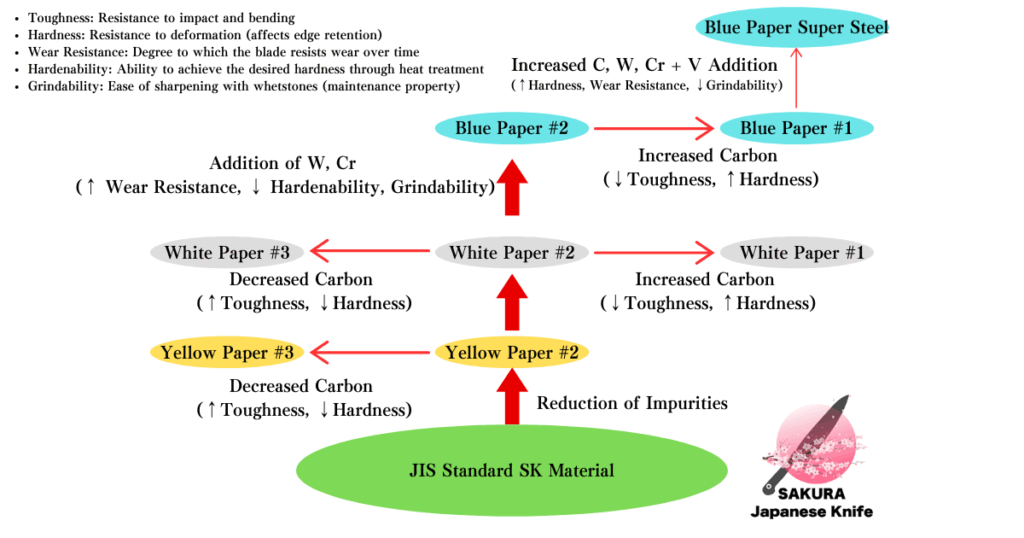
Stainless Steel Choices: There is a wide variety of stainless steels used in knives. Not all stainless is created equal. Some high-end stainless alloys – for example, SG2 (R2) or certain proprietary blends – achieve hardness levels comparable to carbon steel.
These steels offer the benefit of rust resistance but typically are more challenging to sharpen due to their hardness. When choosing a stainless steel petty knife, look for known high-performance grades (like VG-10, SG2, etc.) if you want cutting quality close to carbon steel, and be prepared for slightly more effort when sharpening.
Ultimately, choose a steel that fits your needs and maintenance style. A busy pro who values ultra-sharp performance might accept a high-maintenance carbon steel, while another might prefer a slightly less sharp knife that stays rust-free and ready to go with minimal upkeep.
With these points in mind, let’s move on to the actual knives. Below, we present our top recommended petty knives for professionals, ranked from 1 to 6, with details on why each knife stands out.
Top Recommended Petty Knives for Professionals (Ranking)
1st Place: Jikko Hamono [White #2] Petty Knife
![Jikko Hamono [White #2] Petty Knife](https://media.sakurajapaneseknife.com/us/en/wp-content/uploads/2025/04/スクリーンショット-2025-04-25-22.24.34-1024x1016.png)
![Jikko Hamono [White #2] Petty Knife](https://media.sakurajapaneseknife.com/us/en/wp-content/uploads/2025/04/スクリーンショット-2025-04-25-22.24.43-1024x1024.png)
| Aspect & 5-Point Rating | Notes & Key Points |
|---|---|
| Edge Sharpness ★★★★★ | Shirogami #2 core takes an ultra-fine, razor-like edge; Jikkō’s honbazuke finish lets it glide through ingredients as if cutting paper, enabling paper-thin slices and intricate decorative cuts. |
| Edge Retention ★★★☆☆ | White #2 holds plenty of keenness for a full day’s prep, but loses sharpness sooner than Blue steel; quick touch-ups keep peak performance—an acceptable trade-off for its superb initial sharpness. |
| Rust Resistance ★☆☆☆☆ | Plain high-carbon blade patinas and rusts rapidly if left wet or dirty; vigilant wipe-dry habits and a light coat of oil before storage are essential to prevent red rust spots. |
| Maintenance ★★★★☆ | White #2 sharpens quickly and smoothly on whetstones; even frequent honing sessions are short and effective, a reliability pros appreciate when they need razor sharpness on demand. |
| Aesthetics ★★★★☆ | Classic wa-bocho elegance: mirror-polished blade with subtle forged texture and faint hamon, paired with a simple wooden handle—refined, traditional, and professional without flashy Damascus. |
| Price | USD320 for 120 mm USD350 for 150 mm |
About the knife and maker: Jikko Hamono is a venerable knife manufacturer from Sakai, Japan, known for blending traditional craftsmanship with modern demands. They have been producing high-quality knives for generations, earning trust from professional chefs and home cooks alike through their superb craftsmanship and attentive customer support.
As the name suggests, this White #2 Petty Knife uses Shirogami #2 high-carbon steel as the core (hagane) of a three-layer (san-mai) construction.
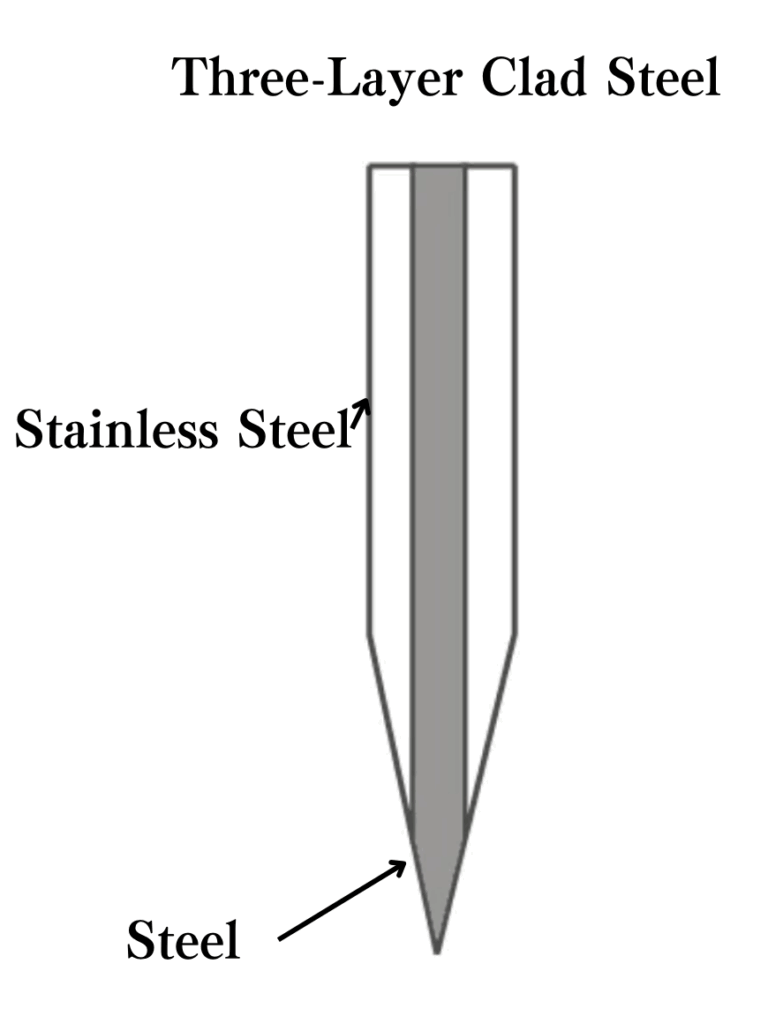
In a san-mai blade, the hard core steel provides the cutting edge, while softer steel clads the sides for added toughness. This construction means that only the exposed core at the edge is reactive – the sides of the blade are more rust-resistant, helping the knife maintain a cleaner appearance overall. However, the edge will patina and can rust if neglected, so regular sharpening and maintenance are necessary to keep it in top shape.
White #2 steel is a traditional high-carbon steel with a high carbon content and very few impurities. It can take an extraordinarily sharp edge and is relatively easy to sharpen.
Jikko Hamono applies a top-tier finish to this knife: the blade is expertly sharpened (honba-zuke edge) and mirror-polished, achieving both razor-like cutting performance and a beautiful shine. White #2 strikes a great balance of hardness and toughness, which is why so many professionals favor it – it’s hard enough to get extremely sharp yet not so brittle as to chip easily under normal use.
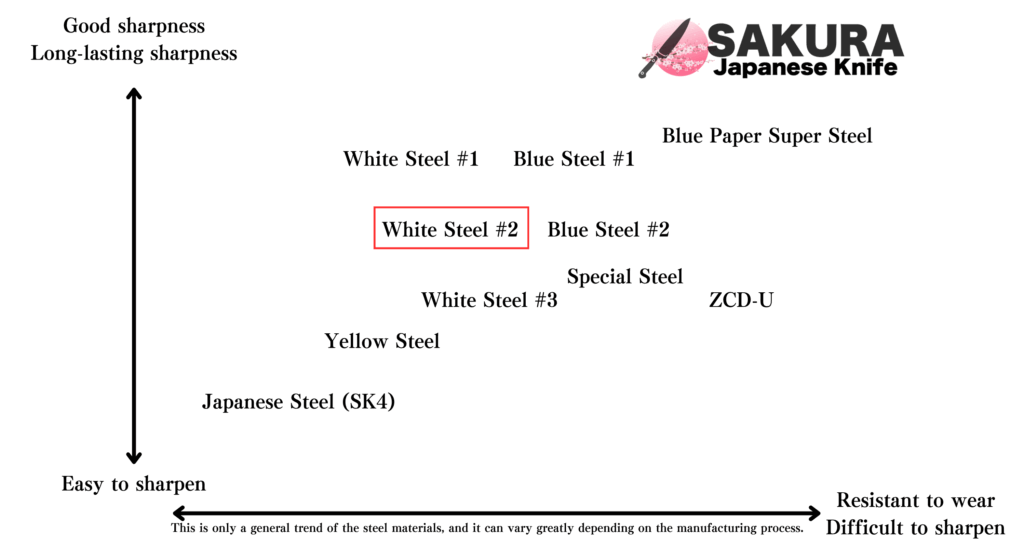
Thanks to proper heat treatment, Jikko’s White #2 blades have high hardness and decent toughness, translating to good (if not class-leading) edge retention.
They won’t hold an edge as long as knives made from Blue Paper steel, meaning if you use the knife heavily every day, you’ll need to sharpen it a bit more often. But the light, crisp cutting feel characteristic of carbon steel is fully present – the knife sails through vegetable fibers without effort and makes quick work of trimming meats with very little resistance.
The handle on this knife usually follows the traditional Japanese style: lightweight hardwood (often magnolia) in either octagonal or round shape, with a water buffalo horn ferrule (the black collar near the blade).
This kind of wa-handle offers a comfortable, nimble grip that many chefs love for precision work. The overall knife is very light, which gives it outstanding agility for fine cuts. Jikko offers this petty in blade lengths ranging roughly from 120mm up to 150mm.
- A smaller ~120mm petty is perfect for tasks like peeling fruit, paring, and decorative carving – it’s compact and so lightweight that even prolonged use won’t cause much fatigue.
- A larger ~150mm petty, on the other hand, has a bit more blade width and weight. This slightly larger size makes it more capable of handling not only small produce but also tasks like thinly slicing meats or filleting small fish. Despite the size increase, it’s still much lighter and nimbler than a full-size chef’s knife, so you retain excellent control on a cutting board, even a cramped one.
Another nice touch: Jikko can do custom name engraving on their knives. Many chefs get their name or their restaurant’s name etched on the blade, which adds a sense of ownership and pride. While White #2 steel does require careful maintenance to avoid rust, its ease of sharpening means that with a bit of regular care, this petty knife can last for many years as a trusty workhorse in the kitchen.
Italian Chef’s Review:
“To be honest, the first time I gripped this Jikko petty knife, its razor-sharp edge absolutely astonished me. For example, when peeling the skin off a blanched, fully ripe tomato, the moment I placed the blade against the tomato, the skin just slid right off without any effort. It feels like the knife becomes an extension of my hand – I don’t need to apply force, so even tedious prep work suddenly feels far less stressful. Delicate herbs like basil or Italian parsley are also a joy to cut with this knife. Its light touch minces herbs without bruising or discoloring them, almost as if it’s preserving their fresh aroma. Honestly, it’s like this petty knife lets me maximize the fragrance and look of the ingredients.”
French Chef’s Review:
“In my French kitchen, I never start a prep session without this White #2 petty for tasks like vegetable tourné. Shaping carrots or potatoes into those seven-sided barrel shapes is painstaking work, but this small, supremely sharp blade lets me carve exactly the angles I want with precision. Even after turning a large pile of veggies, the knife’s sharpness has barely faded, and you can clearly see the difference in the smoothness of the cuts. It’s also a huge help when filleting small fish. For instance, when butterflying trout, this petty slides along the bones just like a yanagiba sashimi knife would – I can make a clean cut without tearing the flesh. The level of control and the clean cut surface it gives is just remarkable.”
2nd Place: Yasuda Hamono “Kotetsu” Aogami #2 Petty Knife
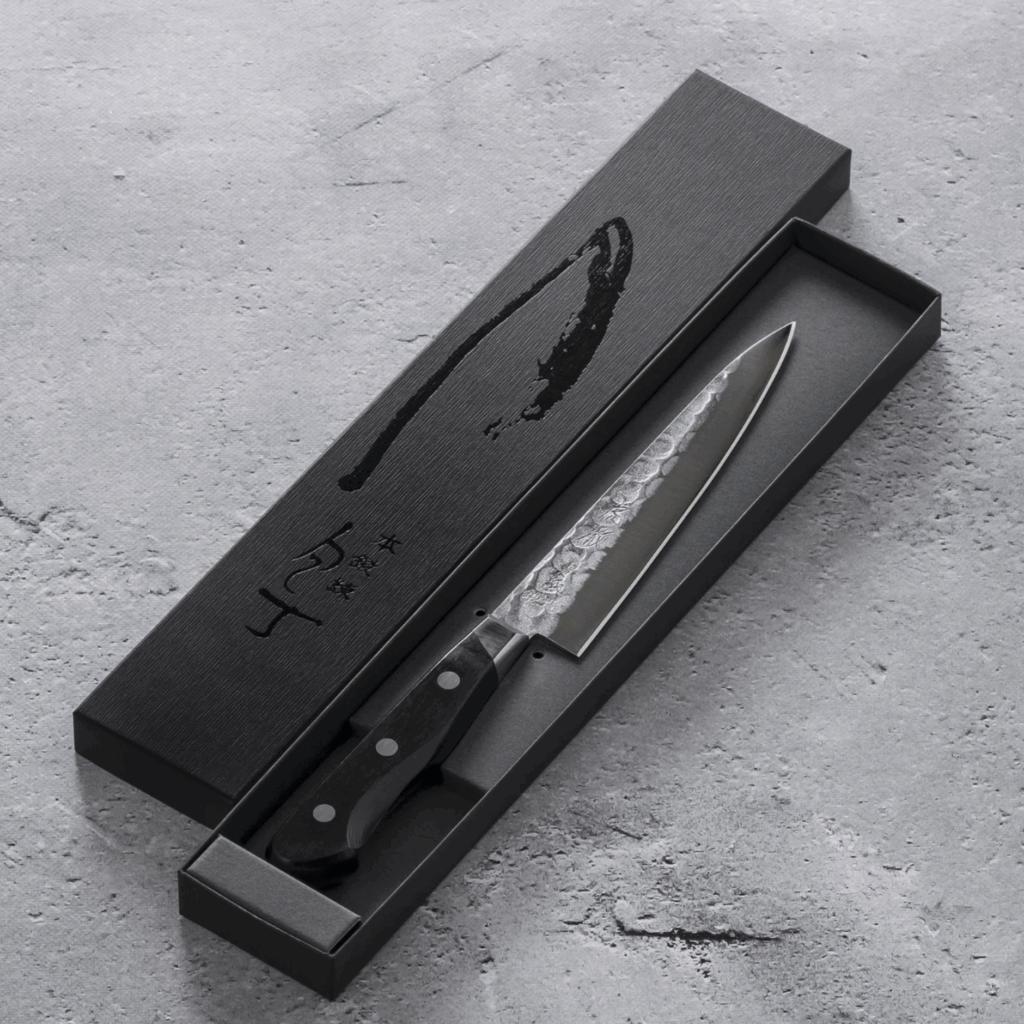

| Aspect & 5-Point Rating | Notes & Key Points |
|---|---|
| Edge Sharpness ★★★★☆ | Aogami #2 core can be ground very thin, delivering near-White-steel keenness. The blade’s slight heft adds cutting stability, so it glides through ripe tomatoes or other delicate foods without snagging. |
| Edge Retention ★★★★☆ | Alloying elements (Cr, W) boost wear resistance; after hours of vegetable prep or meat trimming the edge still feels keen, living up to Blue #2’s reputation for long-lasting sharpness. |
| Rust Resistance ★☆☆☆☆ | High-carbon steel rusts quickly if neglected. Vigilant wipe-dry practice and a light oil coat for storage are essential to prevent spots and patina. |
| Maintenance ★★★☆☆ | Blue #2 is a bit harder than White, so sharpening takes a few extra strokes, but it responds smoothly on quality whetstones—straightforward for anyone with basic sharpening skill. |
| Aesthetics ★★★☆☆ | Traditional hand-forged look: subtle hamon on a satin blade, paired with a durable dark pakka-wood Western handle and nickel bolster for an understated, high-end vibe. |
| Price | ¥11,000 (135 mm, 税込) — approximately $110 USD |
About the knife and maker: This petty knife is part of the “Kotetsu” series by Yasuda Hamono, using Blue steel #2. Yasuda Hamono is a knife maker based in Seki City, Gifu Prefecture (one of Japan’s premier cutlery towns), founded in 1957. They’re known for brands like “Seki Kotetsu” and “Minamoto Kotetsu”, and for producing knives that are handmade by craftsmen. The name “Kotetsu” harkens back to a famous sword from the Edo period, and fittingly, the knives in this series feature a bold, traditional Japanese blade design.
Each Kotetsu knife is individually hand-finished by artisans, which you can tell from the beautiful texture of the steel and the robust, old-world character it exhibits. The blade’s core is made of Hitachi Yasugi Aogami #2 steel. Blue #2 is an alloy steel created by adding tungsten and chromium to the White steel formula. The result is a steel that’s renowned for its edge retention (wear resistance) while still maintaining excellent sharpness.
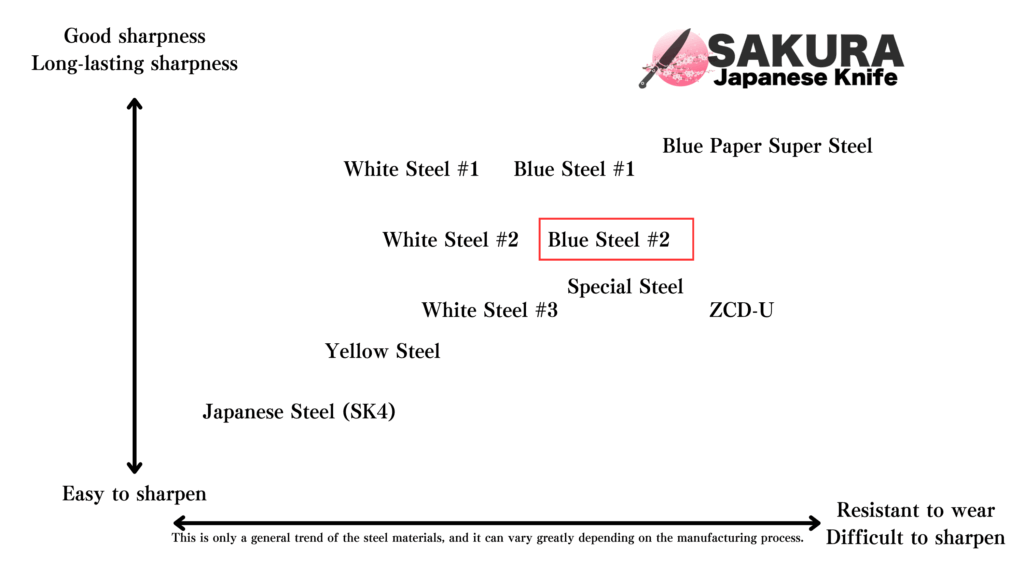
In fact, this petty’s hard steel core is what gives it such high sharpness longevity. You’ll notice that even after long hours of use, the blade doesn’t seem to dull as quickly as a White steel knife might. As Yasuda’s description notes, Blue #2 “combines toughness with hardness,” meaning the blade is quite hard at the edge and therefore resists chipping or rolling even when you put a bit of force into cuts. On the flip side, compared to White steel, Blue #2 can require a little extra time on the whetstone to sharpen – but since it’s still a carbon steel, it has good feedback on the stone and any professional chef will have no trouble sharpening it up to a razor edge.
The Kotetsu petty knife is generally produced in a blade length of around 135 mm, which is a very handy size for tasks like trimming vegetables or doing tourné cuts on root veggies. Interestingly, although it has the look of a wa-knife (Japanese traditional knife), it is actually ground on both sides (double-bevel) like a typical Western chef’s knife, making it versatile and easy for anyone to use. The handle is a Western-style full-tang handle made of reinforced wood (for durability) and features a metal bolster. When you hold it, you’ll feel a reassuring weight and balance.
Thanks to the full-tang construction and metal bolster, the knife’s center of gravity is toward the handle, giving you a very stable feel in hand. It’s a bit heavier than a 120mm petty (which is often just a tang in a lightweight wood handle), but that added weight works to your advantage: it reduces any unwanted blade wobble and helps the knife fall straight and true through the cut. You can almost let the knife’s weight do some of the work – for example, when chopping herbs or slicing small cuts of meat, you can use a light touch and the blade still bites in nicely. Overall, it feels solid and inspires confidence during use.
Italian Chef’s Review:
“Frankly, from the first prep in the morning till the end of dinner service, I can’t function without this ‘Kotetsu’ petty knife. When I heard it was made of Blue #2 steel, I wondered ‘can it really be that different?’ – I was half-skeptical. But after using it, I was blown away by how long the edge lasts. For example, I minced a mountain of garlic in the morning, then went straight into chopping a heap of parsley, and the blade showed zero signs of dulling. Even when cutting into tough cured meats like a chunk of prosciutto or salami, the blade slides in with such ease – it’s a joy. Normally, using a thin petty to cut hard salami would worry me (I’d fear chipping the edge), but this knife has such incredible strength that I can work confidently without babying it.”
French Chef’s Review:
“This Blue #2 petty is a real workhorse in my French kitchen – it’s a knife I can abuse from morning until night and it just won’t quit. If I sharpen it first thing in the morning, I can chop through huge piles of shallots and onions, and by evening it’s still cutting so well that I wonder if it’s almost as sharp as when I started. A knife that makes dicing onions all day not a chore is worth its weight in gold in a pro kitchen. Also, doing fancy cuts like turning carrots into cocottes (seven-sided cuts) is a breeze – the blade is thin and very sharp, so it doesn’t deflect or mess up the shape at all, it just carves exactly the form I want. Even delicate tasks, like scoring a fish’s skin with fine crosshatch cuts for presentation, are surprisingly smooth – the tip glides as if I were drawing with a pen. It’s impressive how a knife can handle both heavy-duty chopping and precision work so well.”
3rd Place: Sakai Ichimonji Mitsuhide “FV10 Tamaken” Petty Knife (VG10 Stainless)
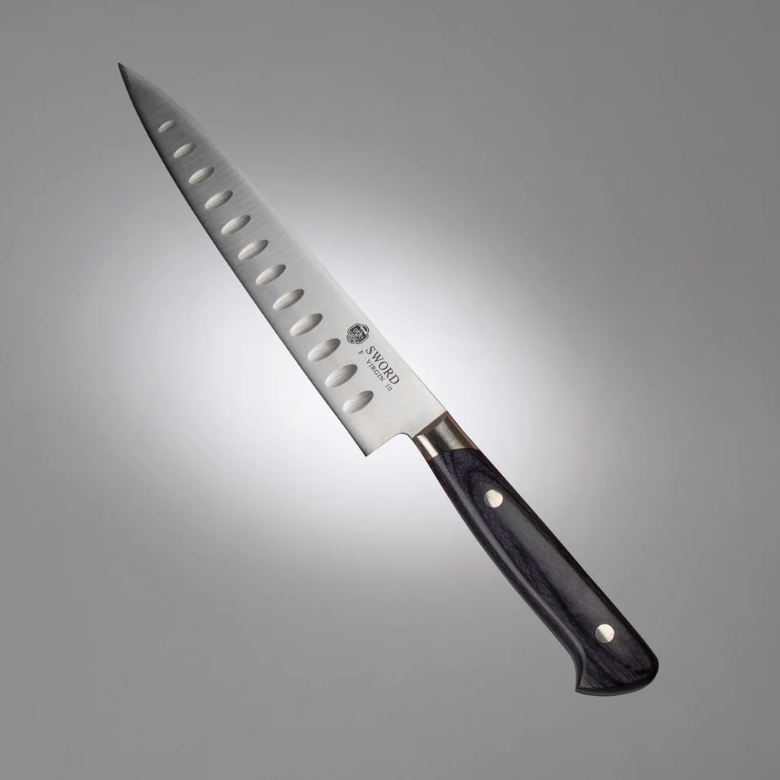
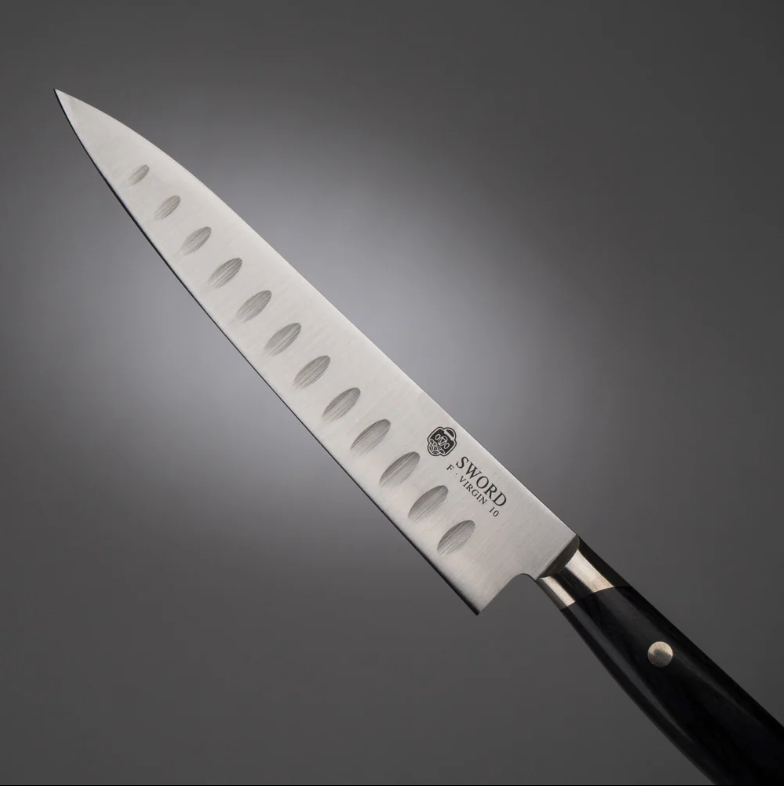
| Aspect & 5-Point Rating | Notes & Key Points |
|---|---|
| Edge Sharpness ★★★★☆ | High-hardness VG10-class stainless core ground very thin brings razor-keen performance. The kiritsuke-style tip excels at precision tasks—fine garnishes, sinew trimming, decorative lines—all achieved with minimal effort and clean, exact cuts. |
| Edge Retention ★★★★☆ | Advanced heat treatment (low-temp + two-stage temper) stabilizes the steel (~HRC 60 +) for excellent wear resistance. Even after large-volume prep the edge remains keen; micro-chipping and warping are rare, so resharpening intervals are long. |
| Rust Resistance ★★★★★ | Fully stainless, highly resistant to moisture and acids. Simple rinse-and-wipe care suffices—no constant wiping during service, no special oiling—providing true “sharp yet carefree” convenience. |
| Maintenance ★★☆☆☆ | Infrequent sharpening needed, but the very hard core grinds slowly. Quality stones and good technique are required to raise a burr; casual users may prefer professional sharpening. The trade-off: few sharpening sessions thanks to strong edge life. |
| Aesthetics ★★★★☆ | Octagonal wooden handle offers traditional elegance; pearly glass-bead-blasted blade shows a subtle layered texture—a refined, Damascus-like accent that blends modern design with classic Japanese style. |
| Price | USD220 |
About the knife and maker: Sakai Ichimonji Mitsuhide is a prestigious knife brand based in Sakai (Osaka), a city famous for centuries of bladesmithing tradition. Sakai knives have a deep history dating back to the Muromachi period, and to this day Sakai craftsmen are renowned for their forging and sharpening skills. Sakai Ichimonji Mitsuhide honors these traditions while also innovating to meet modern needs. They produce not only classic Japanese single-bevel knives (like yanagiba, deba, usuba, etc.) but also excellent Western-style knives such as gyutos and petty knives, all with the high quality one expects from Sakai craftsmanship.
The steel used in this petty knife is V-Gold No.10 stainless steel (VG10). VG10 is a high-carbon stainless alloy that’s well-balanced for kitchen use: it’s essentially a VG1 stainless with added cobalt, which improves wear resistance and toughness. In practice,
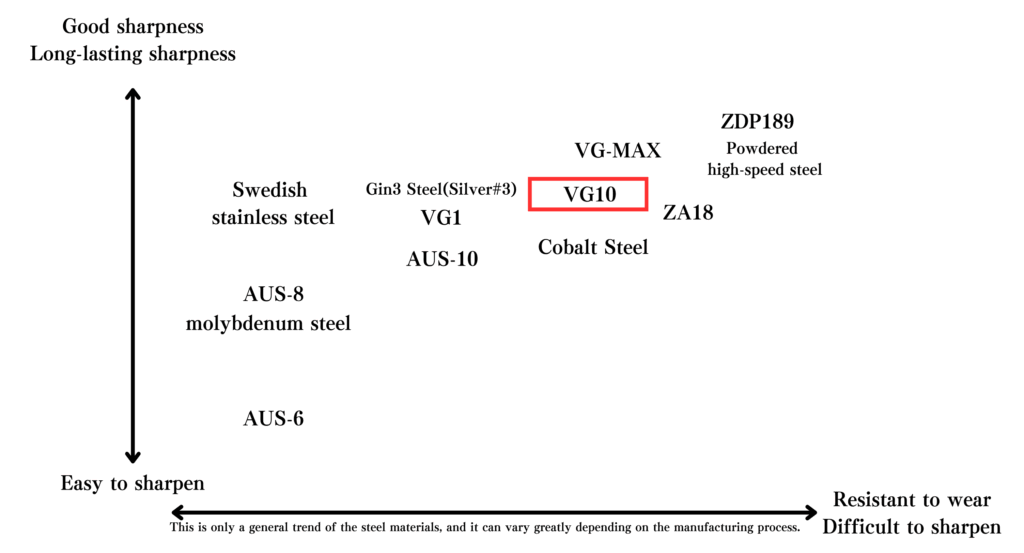
VG10 can be heat treated to around 60 HRC or higher, meaning it achieves hardness and edge retention close to carbon steel while remaining stainless. While pure carbon steel knives can still take a slightly keener edge, VG10 offers plenty of sharpness plus the big benefit of rust resistance. Compared to typical home kitchen stainless knives (often around 50–52 HRC), a VG10 blade is significantly harder and will stay sharp much longer.
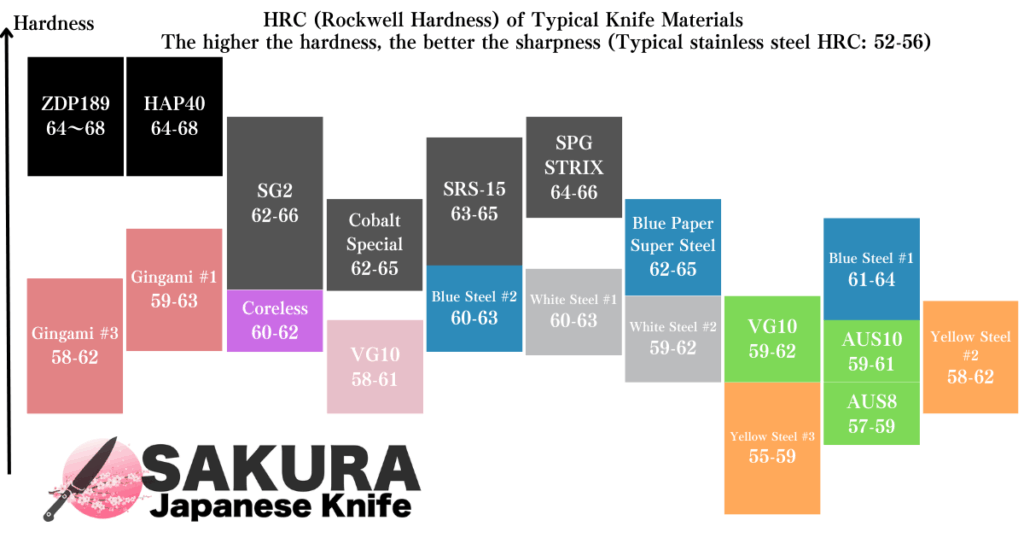
Another point in this knife’s construction: the FV10 Tamaken series is made with a full stainless monosteel construction (as opposed to a soft/hard laminate). Essentially, the entire blade is made from a single piece of high-grade stainless that’s heat-treated, rather than a hard core with soft sides. This “all-steel” (zen-ko) approach in this knife yields exceptional sharpness. Sakai Ichimonji’s craftsmen have pushed VG10 to its limits, minimizing its only traditional weakness (slightly less sharp than carbon steel) by grinding the blade extremely thin and honing it expertly. The result is a stainless petty that cuts as phenomenally as some carbon steel knives.
The handle is a work of art in itself. It’s an octagonal handle made from multilayered laminated wood for strength and water resistance, carved by hand into the traditional octagon shape favored in Japanese wa-bocho. Each handle is meticulously finished, so much so that you can hardly feel the junction between the handle and the bolster. It feels like a seamless extension of the blade. In the hand, the octagonal shape gives superb control – it prevents the handle from twisting and makes fine angle adjustments easy, which is perfect for the precise work petty knives are used for.
Moreover, the handle features a slight curvature known as “torii-zori” (named after the gentle arch of a Shinto shrine gate). This subtle curve, inspired by Japanese swords, is designed to fit naturally in the palm and to transmit force efficiently when cutting. It’s an ergonomic touch that experienced users will appreciate, as it contributes to a very comfortable and secure grip.
The overall cutting experience with this knife is exceptional. Despite being a small knife, the build quality (full steel blade, octagon handle) gives it rock-solid stability and balance. You can perform very controlled, delicate cuts, and yet the knife also feels sturdy enough for heavier tasks. It’s the kind of knife that you might find yourself reaching for constantly, and growing more attached to, the more you use it.
The knife’s look is also a major draw. The blade’s bead-blasted finish creates a unique layered pattern (ji-gane) that comes from the difference in hardness between the core steel and the outer cladding – in this case, since it’s monosteel, it might actually be showing subtle temper patterns or the brushed grain of the steel. The effect is reminiscent of a refined Damascus pattern but in a very understated, elegant way. It leverages the natural beauty of the steel without being flashy. Combined with the rich wood grain and deep color of the octagonal handle, this petty knife really stands out as a fusion of tradition and modern design.
Italian Chef’s Review:
“To me, this Sakai Ichimonji Mitsuhide petty knife is the very definition of an ‘ideal all-rounder’. What amazed me first was that no matter how many herbs I chopped, it never dulled their color or aroma. I can mince a mountain of basil or Italian parsley and the blade doesn’t discolor or impart any metallic smell to them at all. With carbon steel knives, you sometimes notice the herbs’ fragrance changing or the leaves blackening from the steel, which is something you have to watch out for. But with this stainless blade, I can blitz through a big batch of basil for pesto without a second thought.
Another huge advantage is its resistance to acids. For example, before lunch service I often slice lemons to marinate seafood. With this knife, I never see any rust or staining on the blade, so I’m not constantly thinking, ‘I need to wash and dry it immediately.’ And even later in the evening, when I go to slice prosciutto super thin, it still cuts effortlessly. After all that use in the morning, I half-expected it to struggle, but it was still gliding right in. I found myself thinking, ‘Are you kidding me? It’s still this sharp without honing?’ Honestly, not having to stop and sharpen mid-day has been a lifesaver.”
French Chef’s Review:
“What made me fall in love with this petty knife initially was its sleek design and the feel of the grip. The octagonal wa-handle fits in my hand just perfectly, like a traditional Japanese knife, and it lets me channel force with precision — I can control the tip with my fingertips as if I’m writing or drawing. When I’m doing decorative cuts on fish skin (like scoring a fish fillet before searing), it feels like I’m just using a pen to draw on the skin; the kiritsuke-style tip is that precise and responsive. And what’s truly impressive is the edge longevity. During the peak of dinner rush, I might need to quickly chiffonade some shiso leaves or chives on the cutting board. This knife just zips through them, and the edge still doesn’t seem to dull, so every cut all night long is clean and perfect. When things get busy, you might chop a bit carelessly out of haste, but with this knife I never worry that ‘the edge will veer off and mash the herbs’ — it just doesn’t happen. It stays laser sharp and controllable even under hectic use. This petty has absolutely shattered my old stereotype that small knives are less capable — it performs like a much larger, sturdier knife without losing the nimbleness.”
4th Place: Kai “Seki Magoroku Kaname” Kiritsuke Petty (150mm)

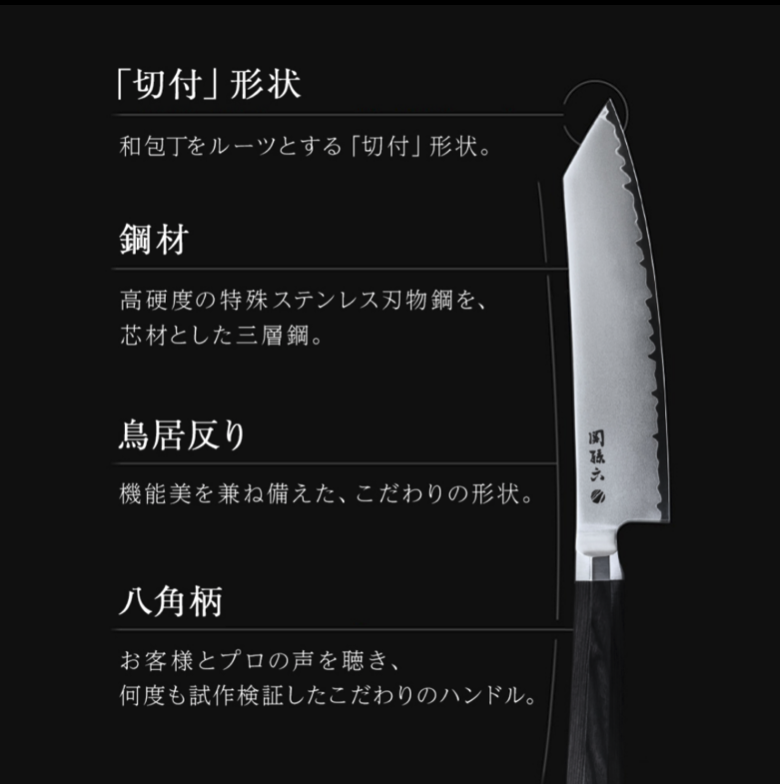
| Aspect & 5-Point Rating | Notes & Key Points |
|---|---|
| Edge Sharpness ★★★★★ | Proprietary high-hardness stainless core receives an ultra-thin grind and kiritsuke-style point, giving near-effortless cutting power. The needle-like tip enables surgical precision when trimming silverskin or carving decorative details. |
| Edge Retention ★★★★☆ | Advanced low-temp + dual-tempered heat-treatment keeps hardness uniform, so the edge stays keen through heavy prep with little micro-chipping or warp—ideal for long restaurant shifts. |
| Rust Resistance ★★★★★ | Fully stainless construction shrugs off moisture and acids; a quick rinse-and-dry is all that’s required—no carbon-steel fuss or constant wiping. |
| Maintenance ★★☆☆☆ | Day-to-day care is trivial, but when sharpening is finally needed the very hard core steel grinds slowly and calls for quality stones and patience. Sessions are rare, yet more laborious than with softer steels. |
| Aesthetics ★★★★★ | Octagonal wooden handle exudes classic elegance; subtle glass-bead-blasted layering creates a refined landscape pattern. The knife’s design pedigree earned a Red Dot award—function and beauty in harmony. |
| Price | USD300 |
About the knife and maker: This 150mm petty knife comes from the Seki Magoroku “Kaname” series by Kai Corporation. Kai is a major Japanese cutlery manufacturer (famous for brands like Shun globally), and the Seki Magoroku Kaname line represents one of their flagship offerings.
The Kaname series merges the rich blade-forging tradition of Seki City (Gifu Prefecture) with innovative modern design. These knives are positioned as premium, limited models – they’re often only available through upscale department stores or select specialty retailers.
The craftsmanship is so high that the Kaname series even won the prestigious Red Dot Award for product design, highlighting how these knives excel in both functionality and aesthetics.
The blade of the Kaname petty is made with a special proprietary stainless steel in a three-layer (san-mai) construction. (Kai hasn’t publicly disclosed the exact core steel, but it’s speculated to be similar to VG10 high-carbon stainless based on its performance.)
The core steel is hardened to a very high level, ensuring superb sharpness and long edge life. This hard core is then clad on each side with more ductile stainless steel, forged together for strength and resilience. On top of that, the blade edge is given an extra-thin grind (a technique sometimes called “suki keiko” in Japanese), which reduces cutting resistance to the absolute minimum.
Thanks to this design, even cutting into harder ingredients feels surprisingly effortless – the blade inserts with minimal force and produces very smooth cut surfaces. Users often notice that compared to standard Seki Magoroku knives, the Kaname series feels a notch sharper and more refined in use, which is a testament to these enhancements.
The blade’s shape is inspired by traditional Japanese knives: it’s a “kiritsuke” style petty, meaning the tip has that distinct straight diagonal edge (like a miniature kiritsuke knife).
This gives the knife a striking silhouette that immediately catches the eye – it doesn’t look like your average petty knife at all. The kiritsuke tip isn’t just for show, either; it offers functional advantages. The sword-like pointed tip allows for very delicate work (such as pulling out fish bones, trimming fat, or scoring meats) with precision and ease, almost like using a small scalpel.
Furthermore, the blade has a good width (height from edge to spine), so even though it’s a small knife, you can confidently use it on a cutting board without your knuckles hitting the board. That width also helps you secure food while cutting, improving stability.
Despite being labeled a petty knife, this model’s versatility is remarkable. From trimming vegetables (doing tournée cuts on carrots or artful cuts on garnishes) to breaking down small fish or portioning meat, the Kaname petty can handle a wide range of tasks. It’s like a cross between a petty and a small gyuto, giving you the agility of a paring knife with some of the robustness of a chef’s knife.
The handle is another standout aspect. It features a hand-finished octagonal handle made of a layered hardwood (stabilized pakkawood) known for strength and water resistance. It’s shaped in the traditional octagon profile used in high-end Japanese knives.
Skilled artisans meticulously carve and sand each handle, ensuring that it fits perfectly with the knife’s bolster (ferrule) without any perceptible gaps or ridges. The result is a grip that feels incredibly smooth and unified – when you hold the knife, it feels like one continuous piece rather than a blade and a handle.
The octagonal shape of the handle gives you excellent control. It prevents the handle from rotating in your hand and allows precise control over blade angle, which is ideal for the kind of fine work petty knives do.
Additionally, the handle incorporates a slight ergonomic curve, the “torii-sori” as mentioned earlier, inherited from Japanese sword handle designs. This gentle curvature nestles into your palm and helps direct force down the blade efficiently, so cutting feels both secure and powerful when needed.
All these design elements mean that although this is a small knife, it offers outstanding stability and cutting power. Chefs often report that using it is very satisfying – it’s nimble enough for detailed work, yet if you push it a little, it’s capable of heavier cuts without feeling flimsy. And the more you use it, the more you appreciate its thoughtful design and build quality, making it a knife you grow attached to.
Visually, the Kaname petty is arguably one of the most attractive knives in its class. The blade’s finish involves a fine glass bead blasting, which creates micro-textures and a soft matte sheen.
Because of the differential hardening and the lamination, this finish brings out a unique layered pattern on the blade surface. It’s somewhat like a very subtle Damascus or suminagashi pattern, showing gentle waves or cloud-like effects where the softer cladding and harder core meet.
It’s deliberately understated – not flashy damascus etching, but rather the natural result of the materials and treatment – and it gives the knife a refined aura. Coupled with the polished, richly colored octagonal handle, the knife is a true blend of traditional craftsmanship and modern elegance. It’s the kind of knife that your colleagues might notice and envy when they see it in your hand.
Italian Chef’s Review:
“First off, the look of this Seki Magoroku ‘Kaname’ petty knife is show-stopping. Everyone in the kitchen has been eyeing it with envy. The crisp lines of the octagonal handle and the sleek kiritsuke blade shape combine to give it an aura that screams, ‘this is not your average knife.’ The moment I held it, I could feel my excitement rising – it just has that effect on you.
Performance-wise, it absolutely lives up to the appearance. For instance, when I slice fresh amberjack (kanpachi) super thin for carpaccio, usually a regular petty knife’s blade would be a bit short for clean slices. But this one is a full 15 cm with a nice blade width, so I can actually use it almost like a mini-yanagiba. I make a shallow score on the skin and then do one clean pull cut – the result is a see-through slice of fish with zero damage to the flesh. I literally let out a “whoa!” because it was so smooth and the slice was perfect.
Another thing that quietly impressed me is how great it is for mincing garlic and herbs. The octagonal handle fits my hand like a glove, so I can really control the blade tip finely. When I chiffonade basil leaves, the knife cuts through without bruising them, leaving them vibrant and intact. The basil doesn’t turn dark at all – it just flutters off the blade in fine ribbons. The difference in aroma and presentation when garnishing with these perfectly cut herbs is huge. It’s like night and day compared to a rough chop.”
French Chef’s Review:
“Ever since I got this petty knife, doing decorative cuts has become so much more enjoyable. In our restaurant, we often garnish appetizers and terrines with intricately carved vegetables. For example, we might etch delicate patterns into cucumbers or carrots. This knife’s kiritsuke tip works like a fine chisel for those tasks – it responds like an extension of my hand, almost like I’m carving with a precision tool. Whatever design I imagine, I can execute it with this blade, and it’s taken the visual finish of our dishes to the next level.
And it’s not just for tiny garnish work. It’s fantastic even for handling small game or poultry like quail. When I’m boning out a quail or removing the backbone, the pointed tip slips right into the joints exactly where I want it, and my accuracy has improved noticeably – far fewer mistakes or rough cuts. The octagonal handle locks into my grip, and with that slight torii-sori curve, I feel like I can channel force exactly where I need to. There used to be an assumption that petty knives lack power or stability for butchery tasks, but this knife proves that wrong. Despite being small, it’s so sturdy and well-designed that it handles like a much larger knife when you need it to. It’s really changed my perspective on what a petty knife can do – this one’s like the little knife that could.”
5th Place: Kikuichi Monjushirō Kanenaga Powdered High-Speed Steel Petty Knife (PH Steel)
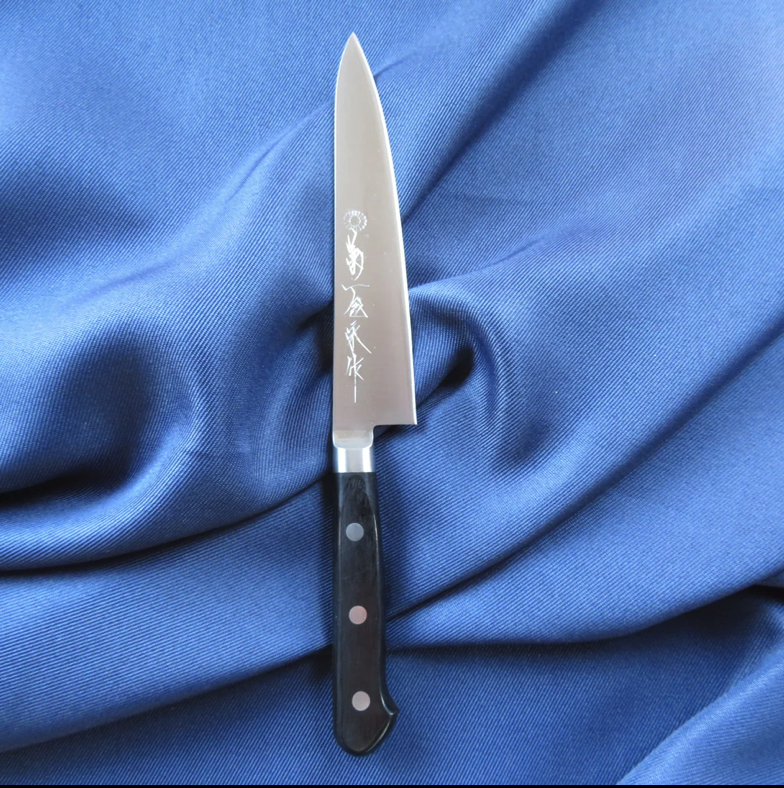
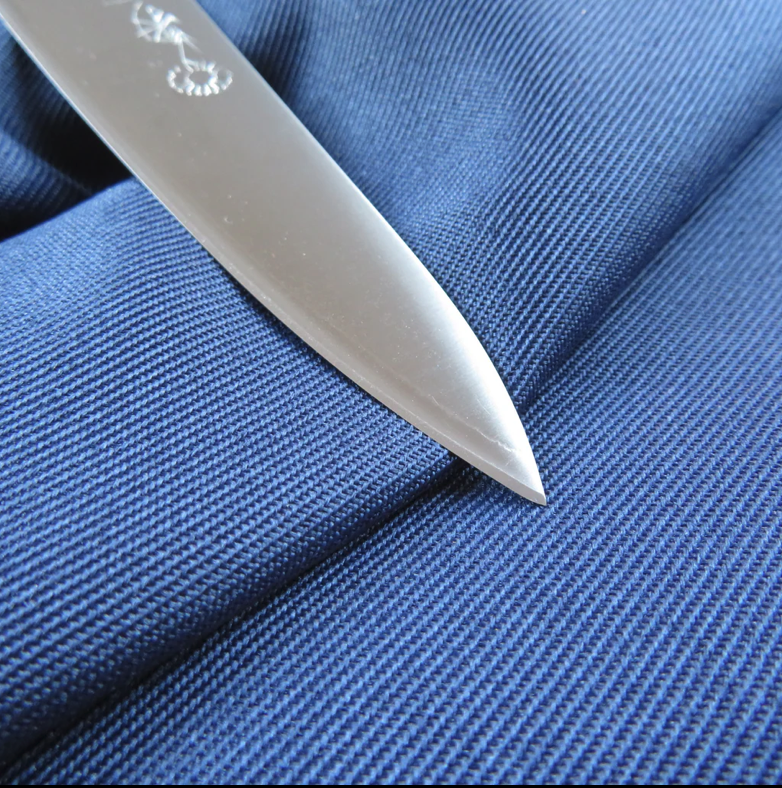
| Aspect & 5-Point Rating | Notes & Key Points |
|---|---|
| Edge Sharpness ★★★★★ | Powder-metallurgy high-speed steel has an ultra-fine grain, so the edge can be polished to a hair-popping angle. Properly sharpened, it slices hairs or paper by mere contact and glides through food with almost zero resistance—sharpness on par with the best White/Blue-steel knives. |
| Edge Retention ★★★★★ | Uniform micro-carbides (W, V, etc.) give top-tier wear resistance. Pros report all-day heavy use with virtually no dulling; many sharpen only once a week despite daily service. |
| Rust Resistance ★★★★★ | High-chromium PM steel is fully stainless, so moisture, acids, and brief neglect rarely leave a mark. Basic wash-and-dry care keeps the blade bright—no carbon-steel paranoia required. |
| Maintenance ★★☆☆☆ | Day-to-day upkeep is easy, but sharpening the very hard steel is slow and needs quality diamond/ceramic stones plus good technique. Luckily, sessions are infrequent thanks to superb edge life. |
| Aesthetics ★★★☆☆ | Functional, no-frills satin blade with Kikuichi’s chrysanthemum crest for heritage appeal; plain Western handle favors comfort and durability over flash—performance takes center stage. |
| Price | USD250 |
About the knife and maker: This petty knife is made by Kikuichi Monjushirō Kanenaga, often simply known as Kikuichi – a storied brand based in Nara, Japan.
Kikuichi’s history is truly remarkable: the company’s origins go back over 750 years to the Kamakura period, rooted in the sword-forging tradition of a master swordsmith named Kanenaga. The name “Kikuichi” and the chrysanthemum crest were granted to this lineage in recognition of forging swords for the Emperor (the chrysanthemum is the Imperial seal).
Over the centuries, Kikuichi transitioned from swords to other blades, and today they produce a wide array of cutting tools, from high-end Japanese kitchen knives (both traditional and Western styles) to scissors and even nail clippers. They’re highly regarded both in Japan and internationally for quality and craftsmanship.
The steel used in this petty knife is a Powdered High-Speed Steel (often abbreviated as HSS for high-speed steel). High-speed steels are a category of tool steels known for their hardness and ability to retain temper even at high temperatures (they were originally made for cutting tools in machinery).
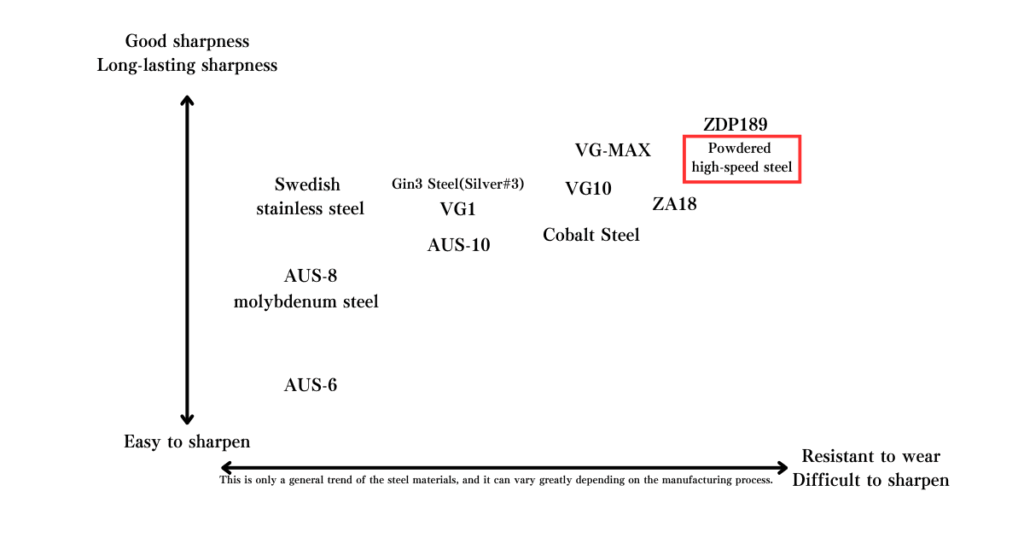
The “powdered” aspect means it’s made by powder metallurgy – finely powdered steel is sintered to form a very uniform, high-performance alloy that can achieve extremely high hardness. In terms of knife use, this means a knife that can be hardened to around 63-65 HRC or even higher, which is among the hardest of stainless steels used in kitchen knives.
Kikuichi doesn’t always disclose the exact formula, but powdered HSS in knives is often something akin to SG2/R2 or other proprietary mixes; given the context, it might be SG2 (also known as SGPS) or another similar steel. Regardless, what’s important is that it’s a stainless steel with hardness on par with top-grade carbon steels like White #1 or Blue #1. So you get carbon-steel-like performance (hardness, sharpness) with stainless qualities.
When you sharpen this knife well, it truly performs at a world-class sharpness level. It’s capable of incredibly fine, delicate cuts – you can push-cut paper or shave off translucent slices of even soft foods without squashing them. The steel’s fine microstructure means the edge can be very stable even when ground thin, so you can put a really acute edge angle (making it extremely sharp) and it will resist rolling or dulling better than most steels would at that thinness.
In practical use, this petty knife can tackle a wide range of tasks with ease. Its thinness and sharpness make it great for precision work like peeling fruit, segmenting citrus, or trimming vegetables. Yet, thanks to the steel’s strength, it can also handle tougher jobs: you can slice up hard root vegetables or cut lots of produce in a row and the blade won’t lose its edge quickly. Chefs are often surprised that even after cutting something as hard as a butternut squash or repeatedly chopping fibrous ingredients, the knife is still going strong in the sharpness department. As Kikuichi’s catalog puts it, “its hardness keeps the sharpness long-lasting,” meaning even in volume cooking, it maintains that fresh-off-the-stones bite.
Being a stainless-based alloy, it’s also quite low-maintenance in terms of rust. You won’t see it corroding or patinating like a carbon steel. This is a relief when you’re, say, slicing dozens of lemons or dealing with vinegary or acidic ingredients – tasks that would have you wiping down a carbon steel blade constantly. With this knife, you can go through such tasks without the blade turning grey or rust-orange on you. It really reduces the mental load of knife care during a busy day.
The flip side of the hardness is, as mentioned, sharpening is something you need to approach thoughtfully. A standard aluminum-oxide whetstone might struggle to cut into the steel efficiently, so harder abrasive stones (diamond, CBN, or ceramic waterstones) are recommended. It’s also a steel that rewards good sharpening habits: keeping a consistent angle and maybe using slightly more time on your finishing strokes to ensure you’ve refined the edge properly. Some users also use a ceramic honing rod or strop during the week to keep the edge aligned until the next big sharpening session.
However, once you get the hang of sharpening it, you’ll find it can take a very clean, polished edge. The grain structure being so uniform means there are no soft spots or large carbides falling out – the edge can be polished to a smooth, fine apex. As long as you use the right tools, you can end up with an edge that’s both ruthlessly sharp and fairly robust for its thinness. And you won’t have to do it often, which is a big plus.
The design of the knife is straightforward, focusing on performance. The blade is often a simple Western-style shape with a double bevel. The handle might be a traditional Magnolia wood wa-handle with a resin ferrule or a Western full-tang, depending on the exact model variant; Kikuichi makes both styles. The version referenced here seems to have a simple aesthetic with the chrysanthemum crest as the main decorative element on the blade and likely a classic handle.
In terms of look and feel, this knife might not immediately catch your eye like a damascus-clad blade or one with a fancy handle, but once you use it, you’ll appreciate why it’s so highly regarded. It’s the kind of knife that might be called a “chef’s knife” in the sense that chefs love it for its reliable, powerful performance, even if it’s not flashy.
Italian Chef’s Review:
“Honestly, since I switched to this Kikuichi petty, my prep work stress has dropped dramatically. I can cut vegetables and meats all day long, and by nighttime the edge still feels as sharp as when I first honed it in the morning. Before, if I was trimming a bunch of pumpkins or slicing through a hard salami, somewhere along the way the knife would get dull and I’d have that ‘oh no, time to sharpen again’ panic. But with this knife, I’ve had instances where even in the evening, I can still slice a tomato paper-thin with ease, and I’m the one standing there in disbelief thinking, ‘No way, it’s still this sharp?’ It almost feels like cheating.
Another big plus: it’s so resistant to corrosion. Even if I’m slicing up dozens of lemons for a catered event, the blade stays shiny and clear. I don’t have to worry about patina or rust at all – no more constant wiping and fussing. That’s been a huge relief. Sure, when I do sharpen it, I notice it’s a very hard steel so it takes a bit more work. But honestly, having to really sharpen it only once a week (usually on the weekend when I have time) is no trouble at all, because it easily holds that edge the entire week. So in total, I’d say it has actually made my life easier.”
French Chef’s Review:
“This knife is like the unsung hero of my kitchen. It doesn’t show off, but once you start using it, you can’t imagine being without it. For example, when I’m mincing a huge pile of shallots, this knife just sails through with a crisp, crunchy bite that makes the task almost enjoyable. And crucially, it doesn’t lose that bite – usually, halfway through a pile of shallots or onions, many knives start to dull and you end up squishing the cuts a bit. With this one, that worry is virtually zero, which I’m extremely thankful for. It just keeps going, cut after cut, producing fine, clean mince without struggling.
Also, even though it’s small, it’s got a lot of backbone. I’ve used it for tasks that normally I’d reserve for a bigger knife. For instance, filleting a fish – this petty can actually handle taking off the fillet and even running along the rib bones to remove them cleanly, because the blade is stiff and strong enough (no wimpy flex). Or trimming the silverskin off a beef tenderloin: it slips under and the edge doesn’t bend or crumple, so I get a nice clean removal of the sinew. With a typical petty, I might worry the blade would flex or even roll on something that tough, but not with this one. This knife taught me what it means to have “a small knife that punches above its weight.” It’s absolutely reliable and tough despite its size – a real trusty sidekick in the kitchen.”
6th Place: Miura Hamono Ginsan Petty Knife (135mm, Purple Octagonal Handle)
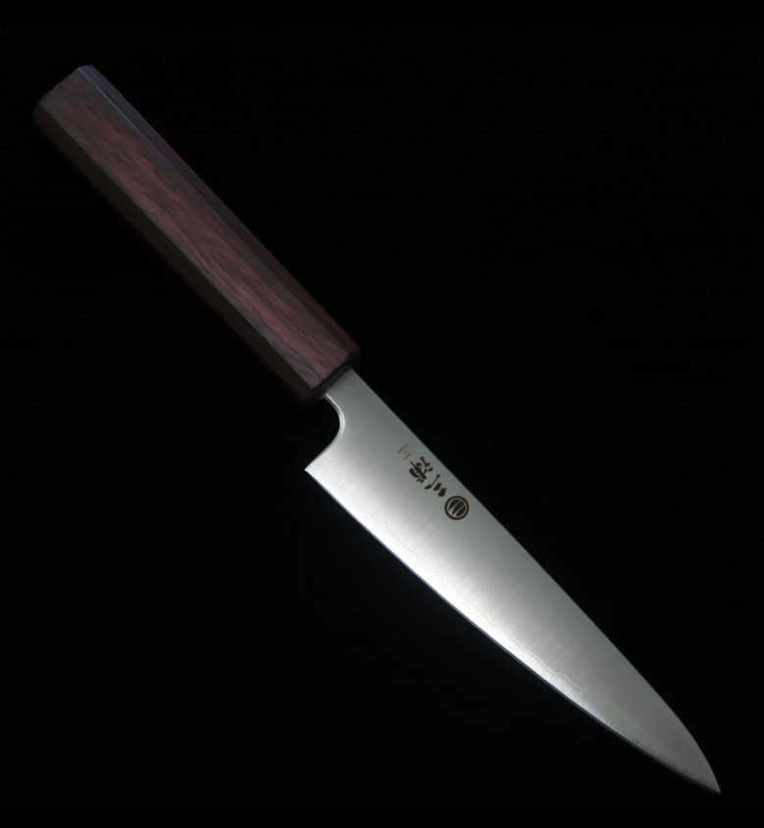

| Aspect & 5-Point Rating | Notes & Key Points |
|---|---|
| Edge Sharpness ★★★★☆ | Ginsan (Silver #3) stainless takes a carbon-like edge; when finely honed it glides through ripe tomatoes or herbs without crushing, giving confident control for detail work. |
| Edge Retention ★★★☆☆ | Holds an edge longer than ordinary stainless but not as long as Blue or PM steels; a quick touch-up on a whetstone restores razor keenness—light, regular maintenance keeps performance high. |
| Rust Resistance ★★★★★ | Fully stainless blade shrugs off moisture, salt, and acids; brief dampness won’t spot or patina, making this a worry-free choice for busy kitchens or outdoor use. |
| Maintenance ★★★☆☆ | Sharpens easily on standard stones (similar feel to carbon steel). Stabilized purple octagonal handle resists water and staining, so both blade and handle are low-maintenance. |
| Aesthetics ★★★★☆ | Vivid “San-purple” octagonal handle adds striking personality to a polished blade with subtle kasumi; traditional form meets modern color for a unique, conversation-starting look. |
| Price | USD200 |
About the knife and maker: Miura Hamono is a long-established knife maker based in Seki City, Gifu Prefecture – which, as noted, is one of Japan’s major knife-making centers (with a history paralleling Solingen in Germany or Thiers in France). Miura Hamono carries on the legacy of Seki’s swordsmithing and cutlery craftsmanship, while also adapting to modern cooking needs. They emphasize not only the hardness and sharpness of their blades but also the ergonomics and ease of use of their knives. Their lineup tends to balance tradition with innovation, yielding reliable knives that are a pleasure to use day in and day out.
The blade steel here is Ginsan-ko (Silver #3 steel), a product of Hitachi Metals and part of the Yasugi specialty steel family. Despite the name “Silver,” it doesn’t contain silver; the name comes from the fact that it’s a stainless steel meant to offer a “silver-like” alternative to the carbon steels named after colors (white and blue). In essence, Ginsan was developed to give the performance of a carbon steel (good hardness, fine grain for sharpness) with the convenience of stainless steel (rust resistance). It’s often hardened to around the mid-50s to low-60s HRC (typically around 59-61 HRC in many knives), which is a sweet spot where it’s hard enough to take a great edge and hold it reasonably well, but not so hard that it becomes brittle or overly difficult to sharpen.
Ginsan steel is known for its well-rounded performance. It may not surpass the extremes of other steels in any one category (some steels are harder, some hold an edge longer, some might be even more stainless), but it has a high level in all key aspects: it takes a very sharp edge, holds it decently, resists rust thoroughly, and is comparatively easy to sharpen and maintain. This balance makes it particularly appealing for professionals who want a knife that performs like a carbon steel but without the headaches of carbon steel maintenance. In a pro environment, time spent on maintenance is time away from cooking, so Ginsan is appreciated for giving a lot of performance with relatively little upkeep needed.
Compared to the truly hard super steels, Ginsan’s edge retention might be a step behind, but it’s still better than your average stainless. And since you can get it scary sharp without much effort, many chefs don’t mind touching it up more frequently. Essentially, if you don’t mind a quick daily sharpening routine, a Ginsan petty will reward you with top-notch sharpness every single day. If you skip a day or two, it’s usually still fine, but professionals often like to keep their knives at peak just out of habit or precision needs.
The petty knife itself, especially in this version with the “san-purple” handle, showcases Miura’s attention to both function and form. The deep purple handle is achieved through a dyeing and stabilizing process which not only looks beautiful but also strengthens the wood. This process fills the wood grain with resin, making it waterproof and resilient. The octagonal shape of the handle is a beloved feature in Japanese knives because it offers control and comfort, and it suits both left- and right-handed users equally.
In terms of usage, a 135mm petty is a wonderful size for all those in-between tasks where a chef’s knife might be overkill and a paring knife too small. It’s long enough to trim meat, section fruit, or even fillet smaller fish, yet short enough to peel apples or segment an orange in hand. Miura’s Ginsan petty, with its keen edge and lightweight feel, is the kind of knife you can use for extended periods without fatigue — great for things like carving intricate garnish or peeling a big batch of apples.
Italian Chef’s Review:
“I have to admit, when I first heard about a ‘Ginsan steel petty,’ I wasn’t sure what to expect. It didn’t really click until I started using it – and I was pleasantly surprised to find out that the claim ‘cuts like carbon steel, but maintains like stainless’ is absolutely true. For example, I had to chop a ton of tomatoes for a sauce. With a carbon steel knife, by the time I’m halfway through, the acid from the tomatoes would have started to dull the edge or even discolor the blade, maybe even a little rust if I’m not fast enough cleaning it. But with this knife, I got through the entire mountain of tomatoes and the blade was still shining and sharp at the end. It didn’t lose its edge to the acid, and it stayed looking pristine. I could just keep cutting without worrying, and that lack of stress is priceless during prep. It’s such a relief not having to constantly pause and wipe the blade or touch it up. This petty really proved itself as a knife that gives carbon-like performance with stainless convenience.”
French Chef’s Review:
“At first, I was drawn to this knife purely by the gorgeous purple handle – I mean, it was love at first sight. But once I started using it in a professional setting, it impressed me even more with its performance. In our kitchen, we go through heaps of minced shallots and onions daily. This knife not only makes quick work of them with its crisp sharpness, but because it’s so rust-resistant, I noticed a big reduction in the usual upkeep. Normally, with other knives, I’d have to stop and wipe the blade because onion juices can be corrosive or make the edge feel sticky, and I’d often need to re-sharpen in the middle of prep because the edge starts feeling worn. With this one, I breezed through the pile – the sharpness stayed lively, and the blade stayed clean. Even when I cut into something like figs that had been marinated in port wine (which is acidic and sugary), the blade didn’t cloud or stain at all. I remember being frankly amazed, thinking, ‘So this is how strong a stainless steel can be against acids and sugars.’ It handled it without a hint of tarnish. And of course, when I do need to sharpen it at the end of the day, it only takes a couple of minutes to get it scalpel-sharp again. So I got a knife that’s beautiful and practical. It has become one of my favorite tools – as pleasing to use as it is to look at.”
Conclusion
Professional chefs need to prioritize exceptional sharpness in their knives, which is why many of the top petty knives are made from high-performance steels – whether high-carbon steels or advanced stainless alloys. These knives do tend to cost more than ordinary kitchen knives, but considering how frequently you’ll use a petty knife in daily work, a good one is absolutely worth the investment for its reliability and performance.
When choosing the best petty knife for your needs, consider not just the initial sharpness, but also factors like rust resistance, ease of maintenance, and how it feels in your hand. A knife that stays sharp longer or is easier to care for can save you time and effort in a busy environment. Likewise, a well-balanced knife with a comfortable handle can reduce fatigue and improve precision during long hours of prep.
Each of the top Japanese utility knives we’ve ranked above has its own strengths – from ultra-sharp edges to great durability or low maintenance. Think about your specific kitchen needs and which attributes matter most to you. By selecting a petty knife that fits your preferences and workflow, you’ll not only enhance your efficiency but also elevate the level of your food prep. A great petty knife quickly becomes an extension of your hand, making every slice smoother and every garnish more refined. Choose the right one, take good care of it, and it will reward you with years of exceptional performance, helping take your culinary skills up a notch. Enjoy your new knife and the precision it brings to your craft!
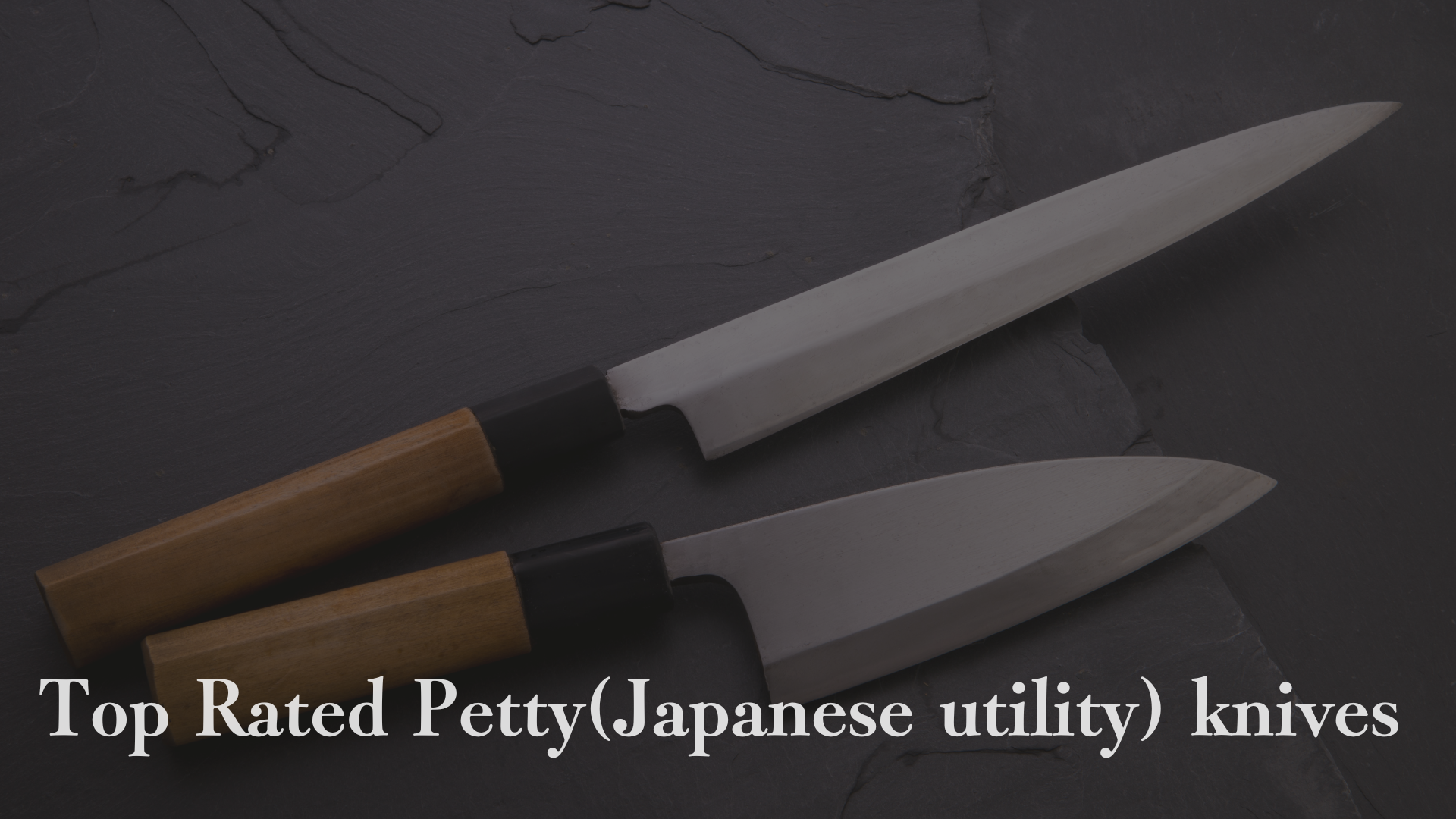
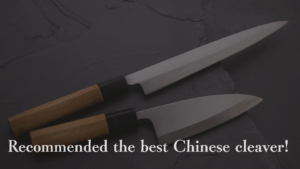
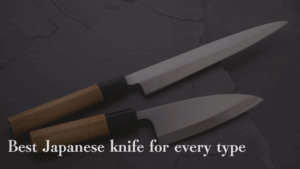
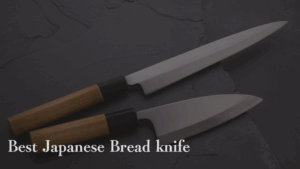
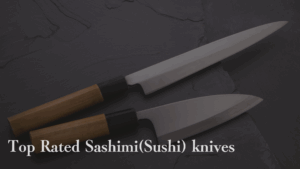

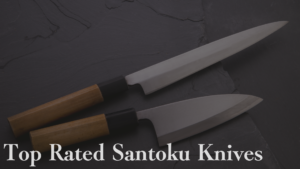
Comments